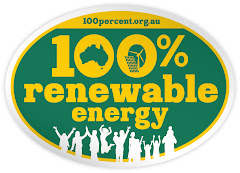The horrific fires that have occurred here in Victoria have killed hundreds of people and destroyed over 1800 homes. They are Australia’s largest peacetime natural disaster and much work needs to be done to help those that have lost loved ones and property. Beyond the immediate issues of how to put the fires out and provide adequate aid to those affected, debate is raging over what made them so particularly fierce, and how to avoid so many fatalities in future fires.
One of the issues being debated is the role of climate change. While no single event can ever be attributed to climate change, it is very likely that climate change had a hand in creating the conditions that allowed the fires to spread so quickly and burn at such high temperatures.
Since the fires started, many scientists have been discussing this issue in the media. Below is a selection of their comments.
David Jones, from the Bureau of Meteorology in the Sydney Morning Herald
Melbourne reached 46.4 degrees on Saturday, the highest in 154 years of record-keeping, overshooting the previous high set on Black Friday - January 13, 1939 - by 0.8 degrees and far exceeding the temperature on Ash Wednesday in 1983, which was 43.2 degrees.
"We've never seen anything like this in Victoria's history," David Jones, from the bureau's National Climate Centre, said yesterday. "You don't usually break records by much. You might beat it by point one of a degree or point two."
"Records being broken by that much are just unheard of," Mr Jones said. "You just don't break records with that kind of margin in a stable climate. It's an extraordinary event, this one."
ANU climate scientist Dr Andrew Glikson in the Canberra Times
…Australia [is] now in a ''hell to high water state'', with the Victorian bushfires and Queensland floods offering a glimpse into a future where ''extreme events hit hard and fast''.
''It has long been predicted that global warming will manifest itself through a series of extreme weather events, the result of high energy cyclones generated over warming ocean water, rising air plumes over land and increasing temperature contrasts between evaporating water surfaces, cloud masses and warm land air currents.
''Close connections are documented between global warming trends and the increased frequency of heat waves.''
Professor Neville Nicholls in The Age
Monash University’s Professor Neville Nicholls, who has spent 35 years researching climate, said the scene for Black Saturday was set with the "chronic drying" of the environment due to the 12-year drought. Then came the January heatwave which, in terms of temperatures - with record-breaking jumps of more than two degrees in places - was so extraordinary Nicholls describes it as "mind-boggling".
"The really crucial thing linking this to climate change is the three-day heatwave rather than the really hot temperatures on the day of the fires. By then, the situation was already primed . . .
"I think it is beyond reasonable doubt that global warming and the enhanced greenhouse effect has exacerbated the severity of this tragedy,” said Nicholls, who for decades worked at the Bureau of Meteorology as a senior principal research scientist.
CSIRO’s Kevin Hennessy on The World Today
[there has been a] "radical increase in the fire weather risk since about the year 2000. And we've looked at records back to 1973. So it does appear to be unusual. And it is coincident with a very strong decrease in rainfall that we've seen over the last 12 years in south eastern Australia."
Professor David Karoly, Victoria’s Chief Climate Change Advisor on Lateline
"it is not possible to attribute any single event to climate change. However, climate change … has loaded the dice and has increased the probability of these sorts of events occurring.
"So what we're seeing is a shift in the climate that allows these sorts of severe fire weather events to occur much more commonly. And unfortunately, the changes that are in train already mean that they'll become much more common over the next 10 and 20 years in addition to what we've seen in the last 10 years."
Professor David Karoly again writing in Realclimate
Of course, the impacts of anthropogenic climate change on bushfires in southeast Australia or elsewhere in the world are not new or unexpected. In 2007, the IPCC Fourth Assessment Report WGII chapter “Australia and New Zealand” concluded.
An increase in fire danger in Australia is likely to be associated with a reduced interval between fires, increased fire intensity, a decrease in fire extinguishments and faster fire spread. In south-east Australia, the frequency of very high and extreme fire danger days is likely to rise 4-25% by 2020 and 15-70% by 2050.
…it is clear that climate change is increasing the likelihood of environmental conditions associated with extreme fire danger in south-east Australia and a number of other parts of the world.
It is obvious from the comments above (which have also been reflected in comments by the United Firefighters Union and Tim Flannery) that our Federal Government needs to reassess its climate change policies. These fires have opened a window from which we can glimpse our future. It is a frightening view. Five per cent emissions cuts are not enough, and playing a spoiler role in international negotiations is only going to make matters worse. If we are clever we will learn from this tragedy and act to prevent it becoming a common occurrence.





No comments:
Post a Comment